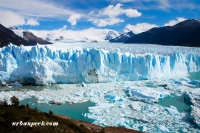We need a new Earth Day (Edward Calabrese)
22.Apr.2016Edward Calabrese, Professor of Toxicology, Department of Public Health Environmental Health Sciences, University of Massachusetts, Amherst, MA. The first Earth Day, in 1970, was celebrated after a wave of environmentalism swept the nation. Many give credit to Rachel Carson's 1962 book, "Silent Spring," which popularized the notion of large-scale chemical pollution, for igniting the movement.The "linear model" assumes that just a single molecule of a carcinogen or a single ionization from an X-ray can induce cancer. The enthusiasm spawned by Earth Day soon gave us brand new regulatory agencies such as the Environmental Protection Agency. The linear model is rigid, absolute and wrong. The resulting environmental regulations are having a negative impact, not only on societal costs, but on our health as well.
Why fear of radiation is wrong: personally, scientifically, environmentally (Wade Allison) (2)
22.Mar.2015Wade Allison, Emeritus Professor of Physics, University of Oxford, United Kingdom explains the science of low dose radiation and the disastrous consequences of existing radiation regulations.
Why fear of radiation is wrong: personally, scientifically, environmentally (Wade Allison) (1 News)
13.Mar.2015Wade Allison, Emeritus Professor of Physics, University of Oxford, United Kingdom explains the science of low dose radiation and the disastrous consequences of existing radiation regulations.
James Conca - A very big report came out last month with very little fanfare. It concluded what we in nuclear science have been saying for decades – radiation doses less than about 10 rem (0.1 Sv) are no big deal. The linear no-threshold dose hypothesis (LNT) does not apply to doses less than 10 rem (0.1 Sv), which is the region encompassing background levels around the world, and is the region of most importance to nuclear energy, most medical procedures and most areas affected by accidents like Fukushima.







